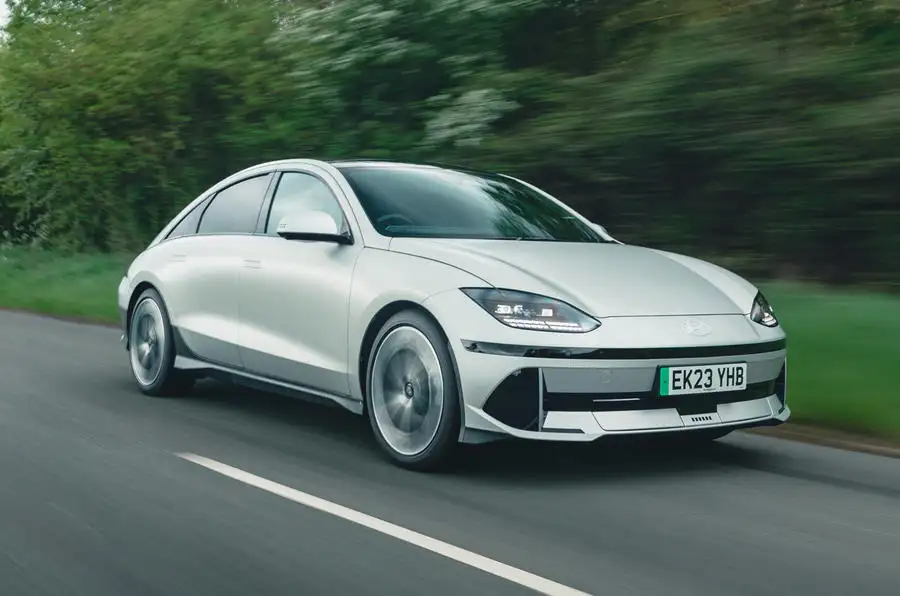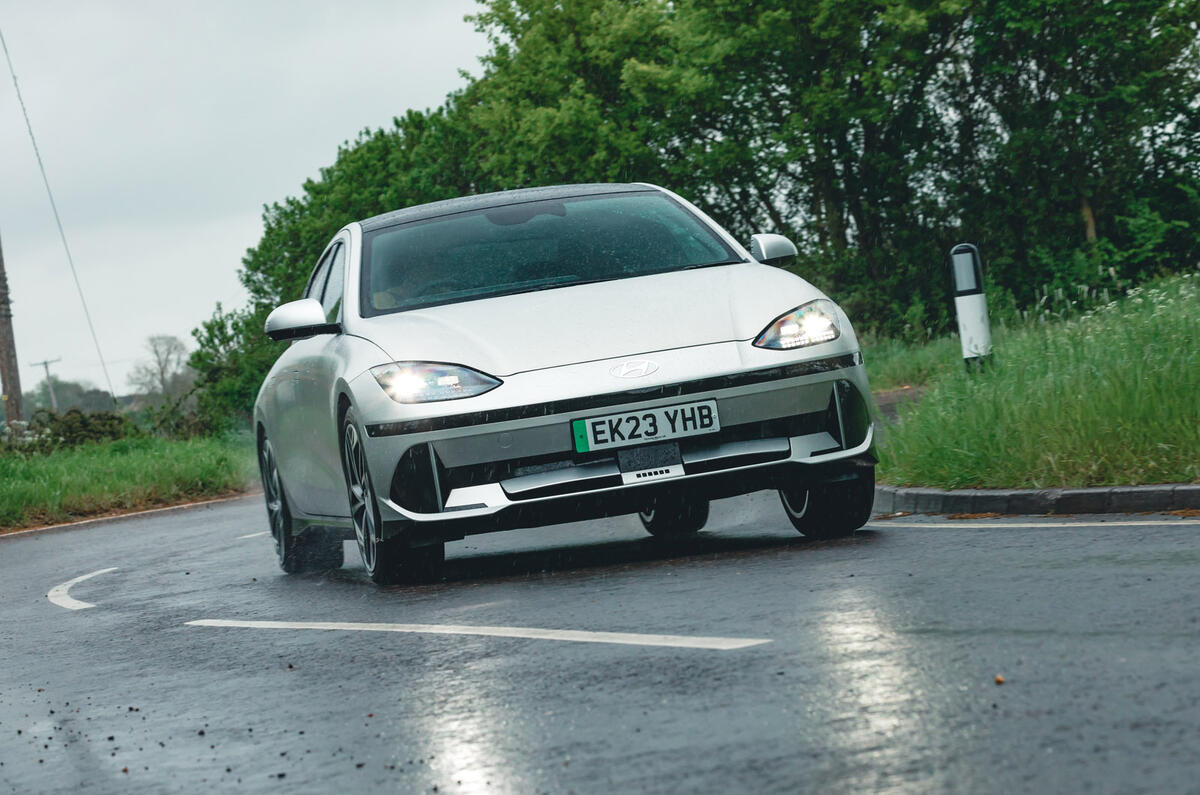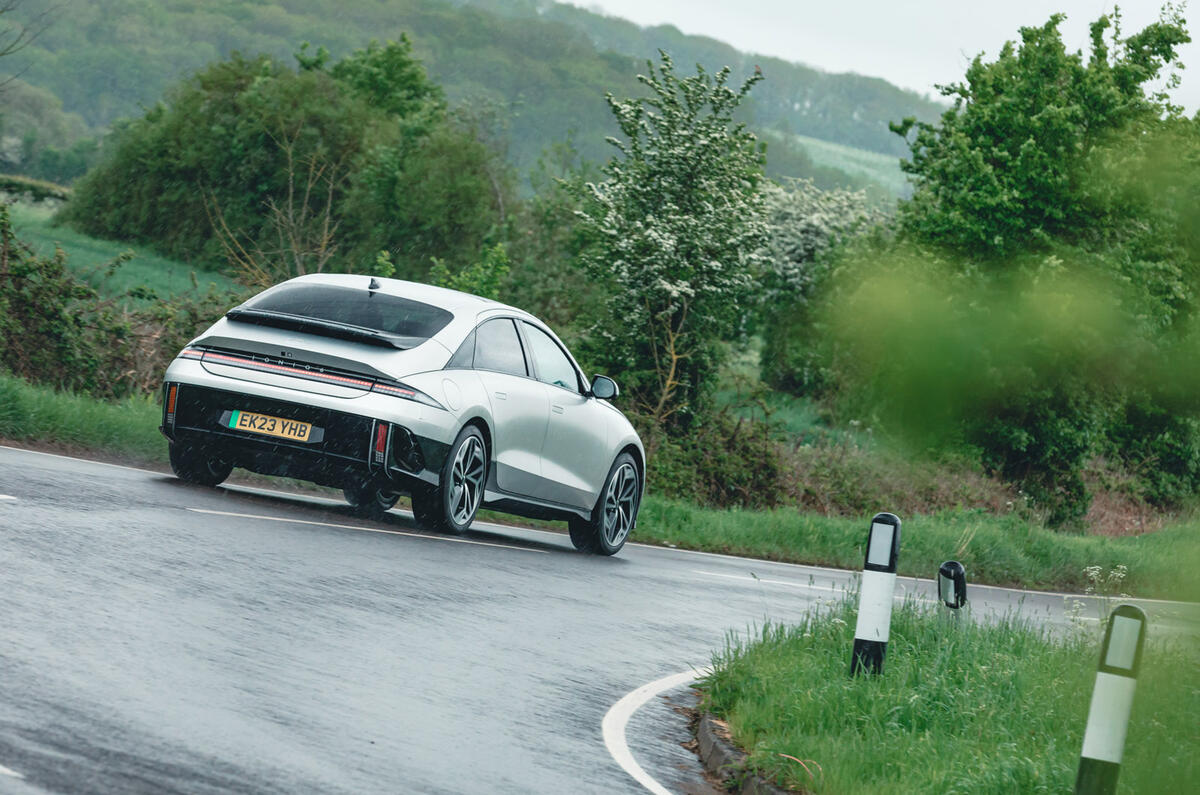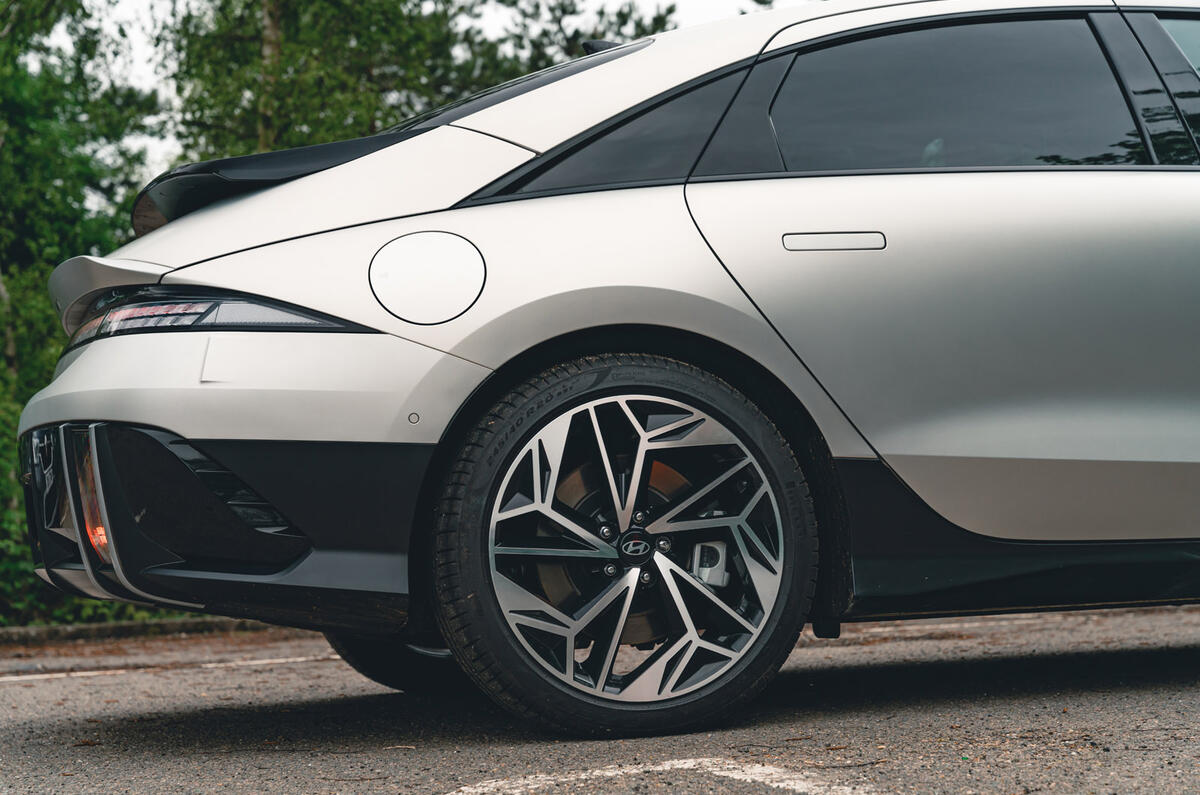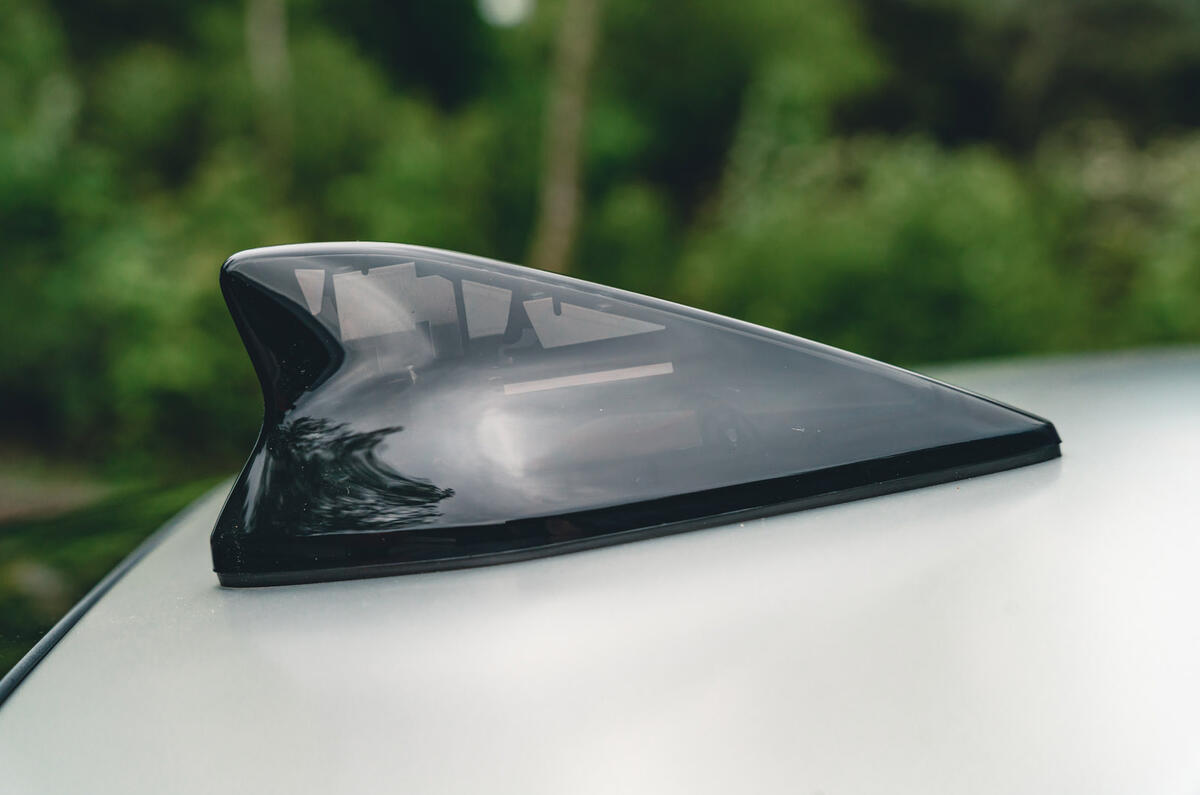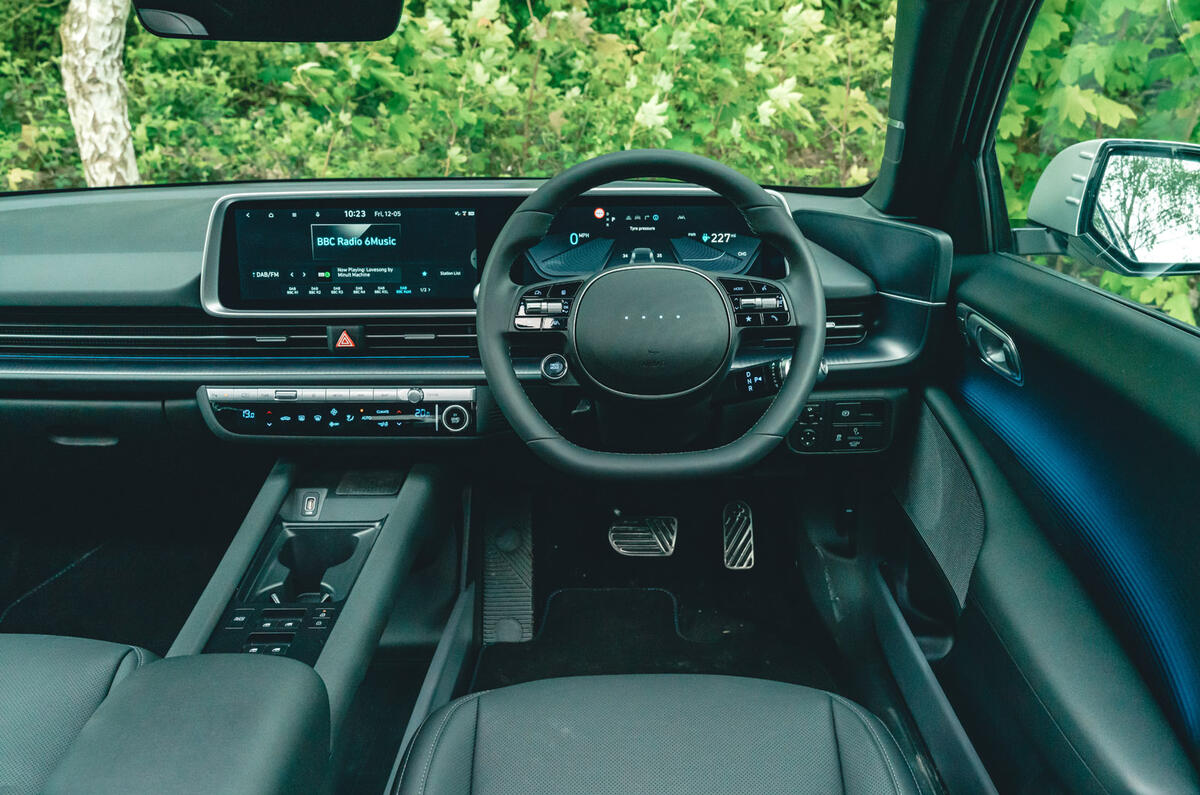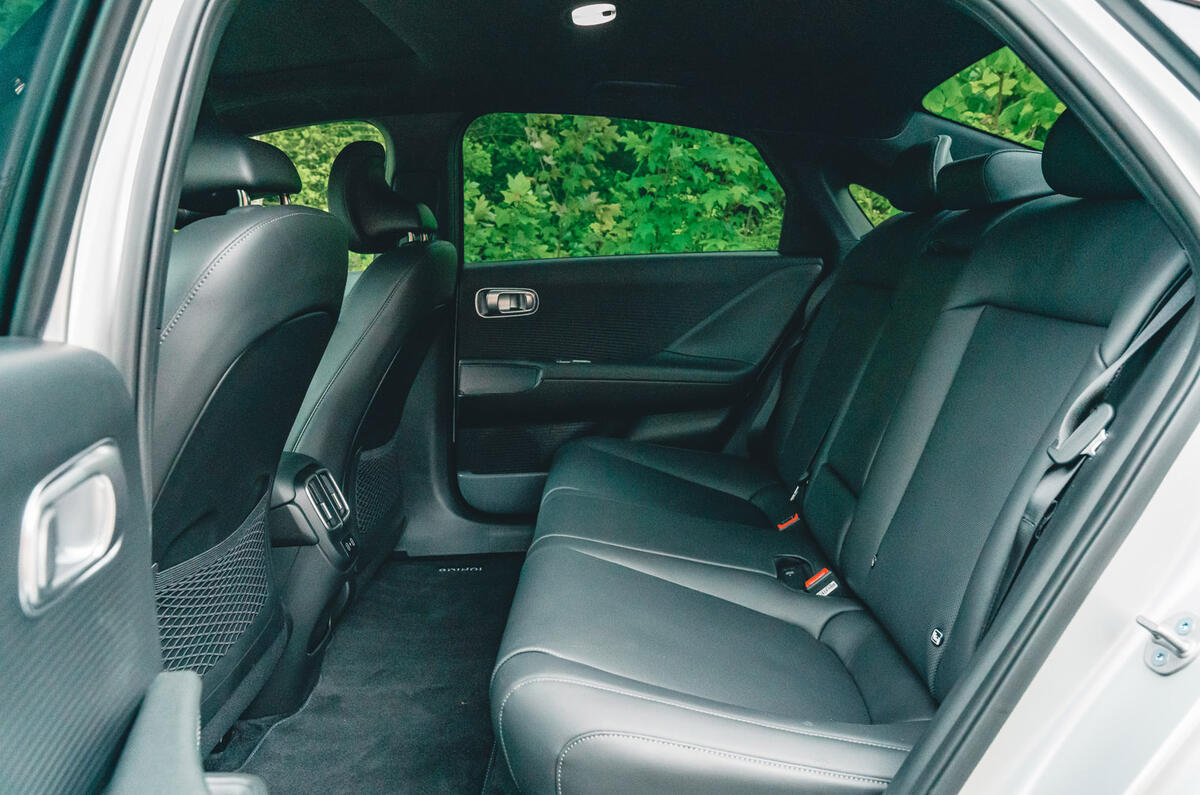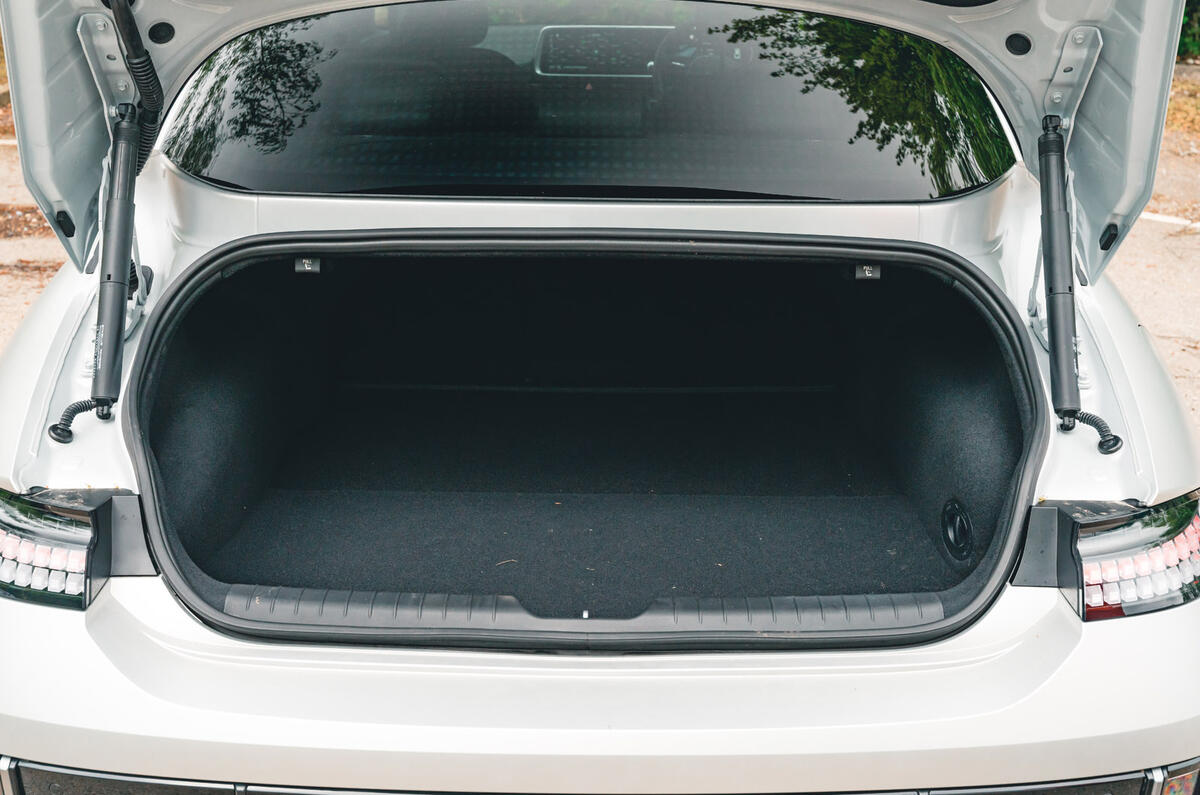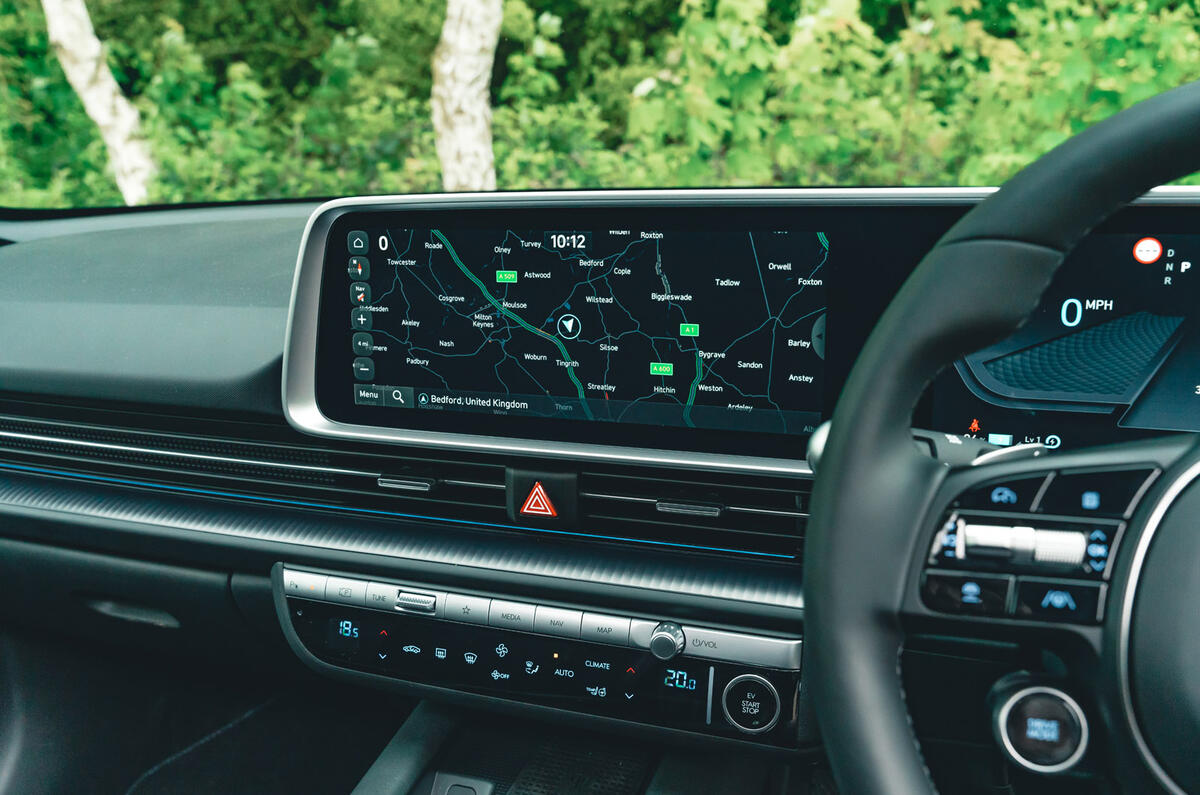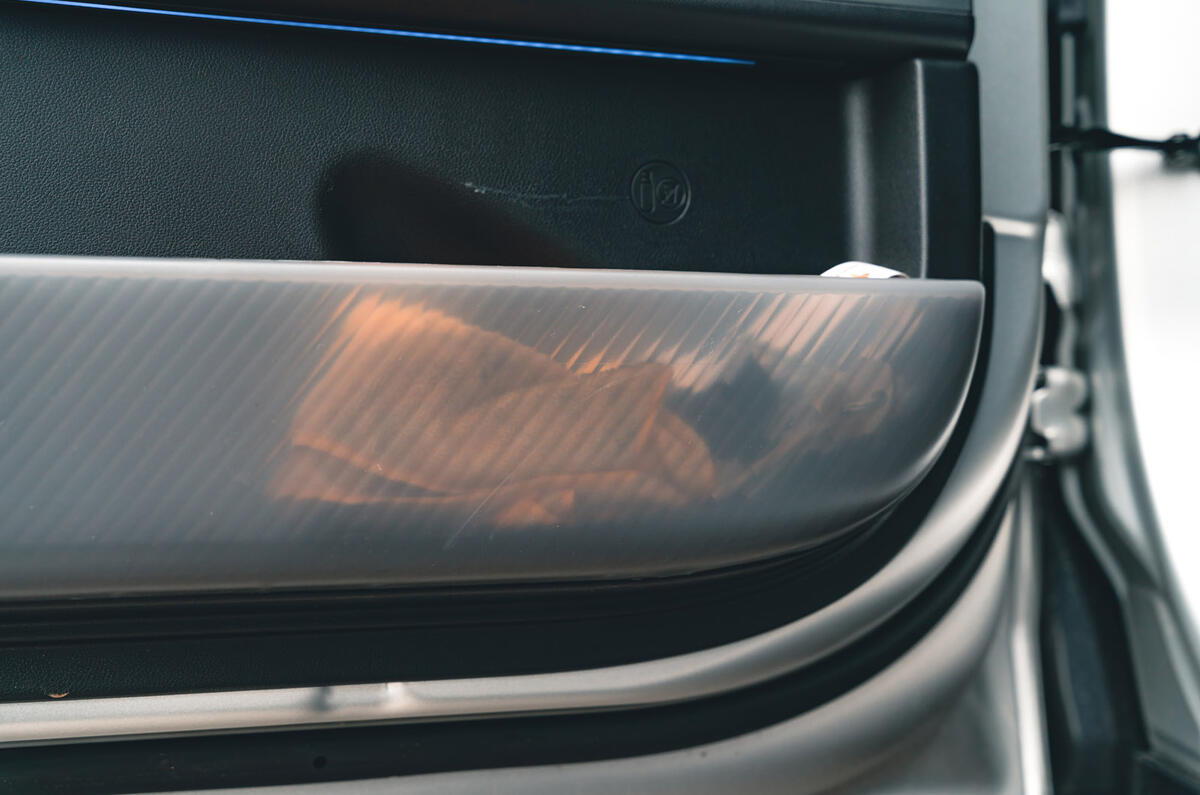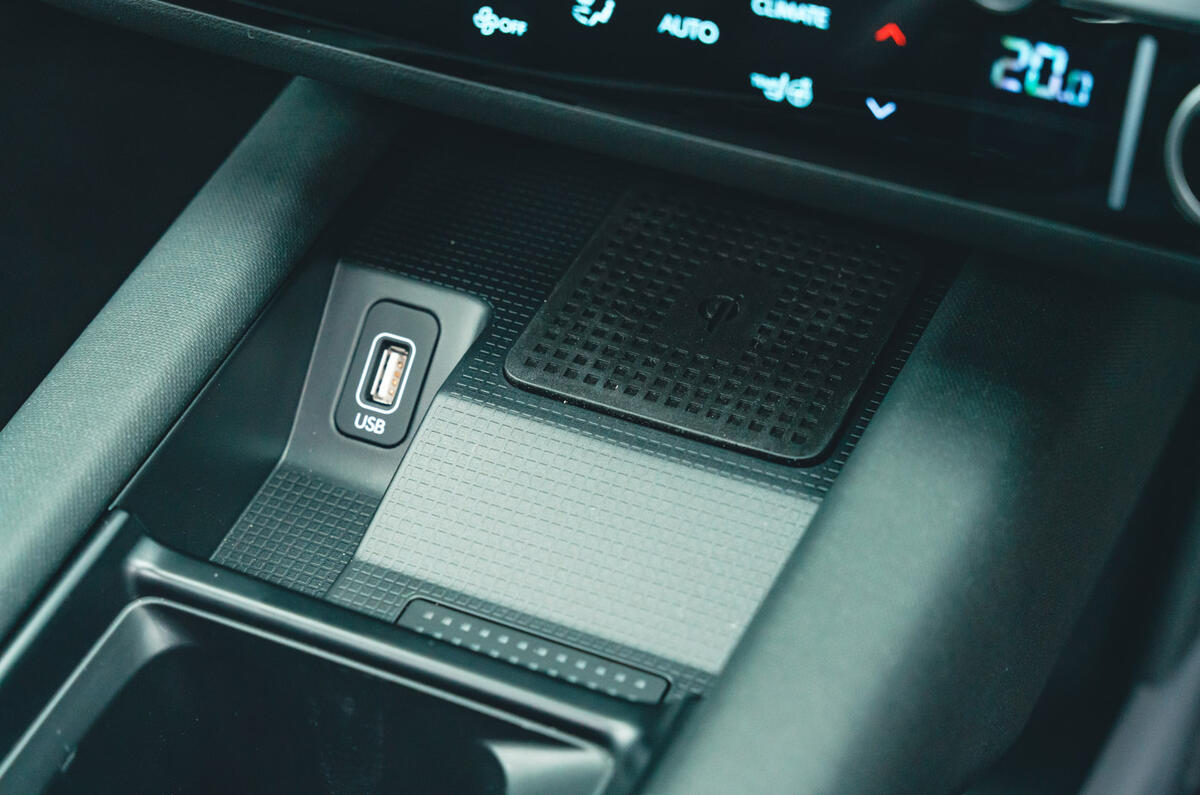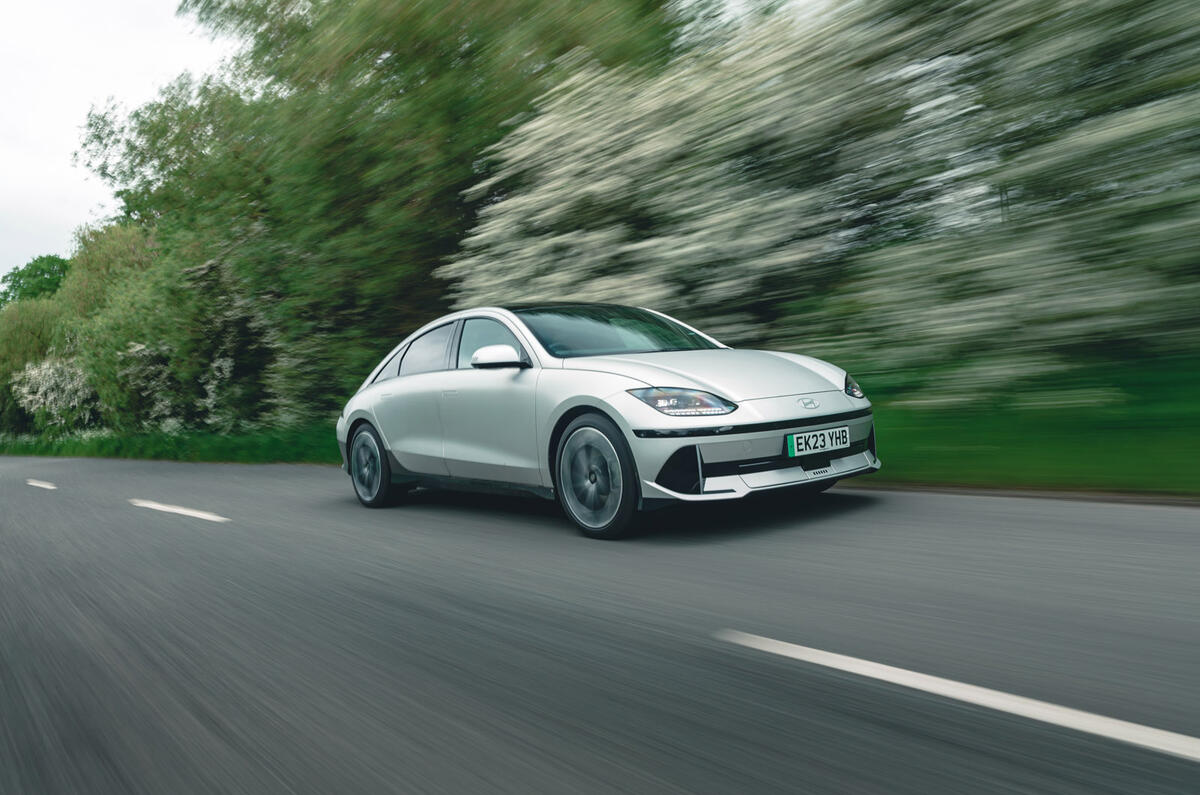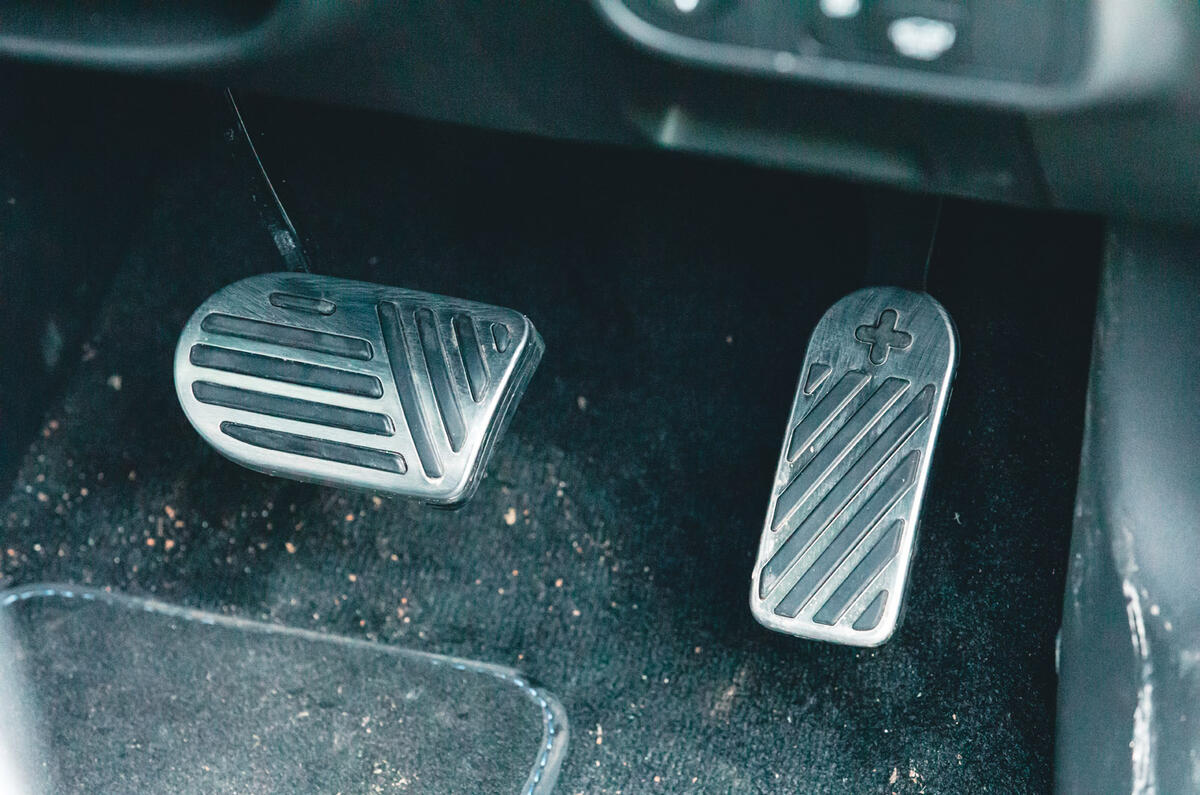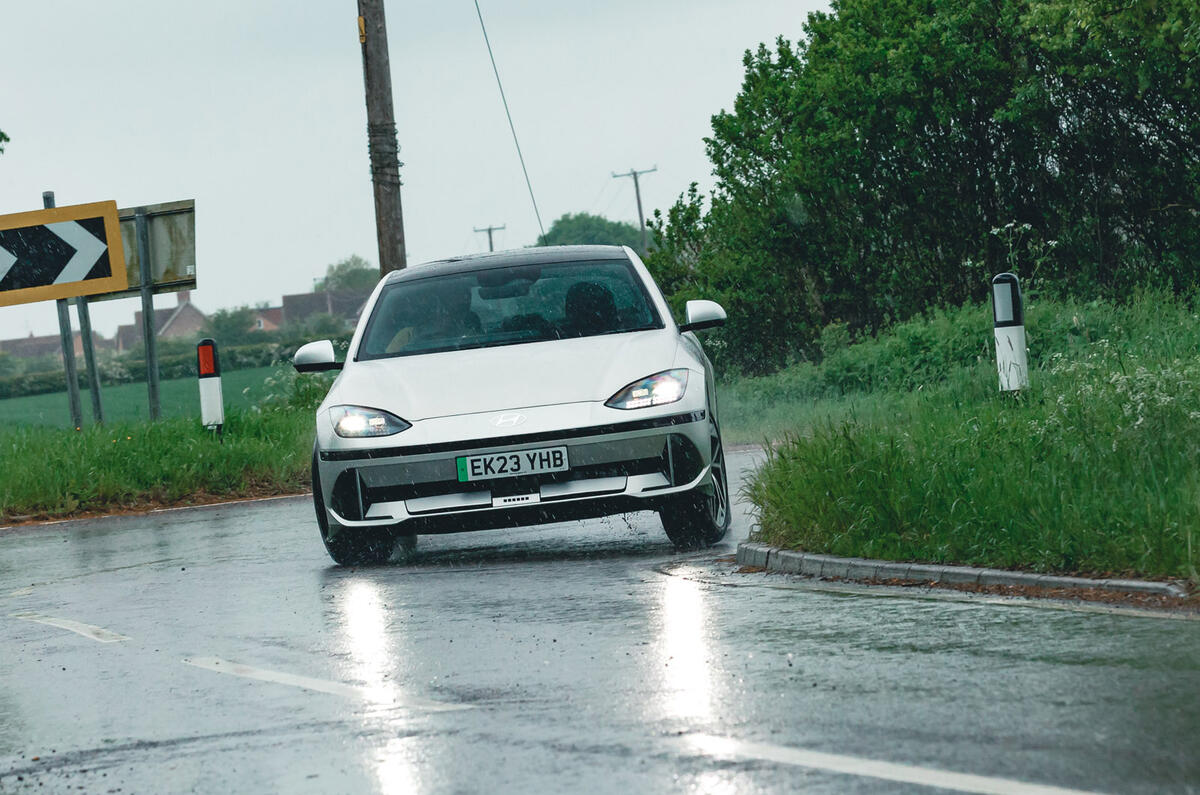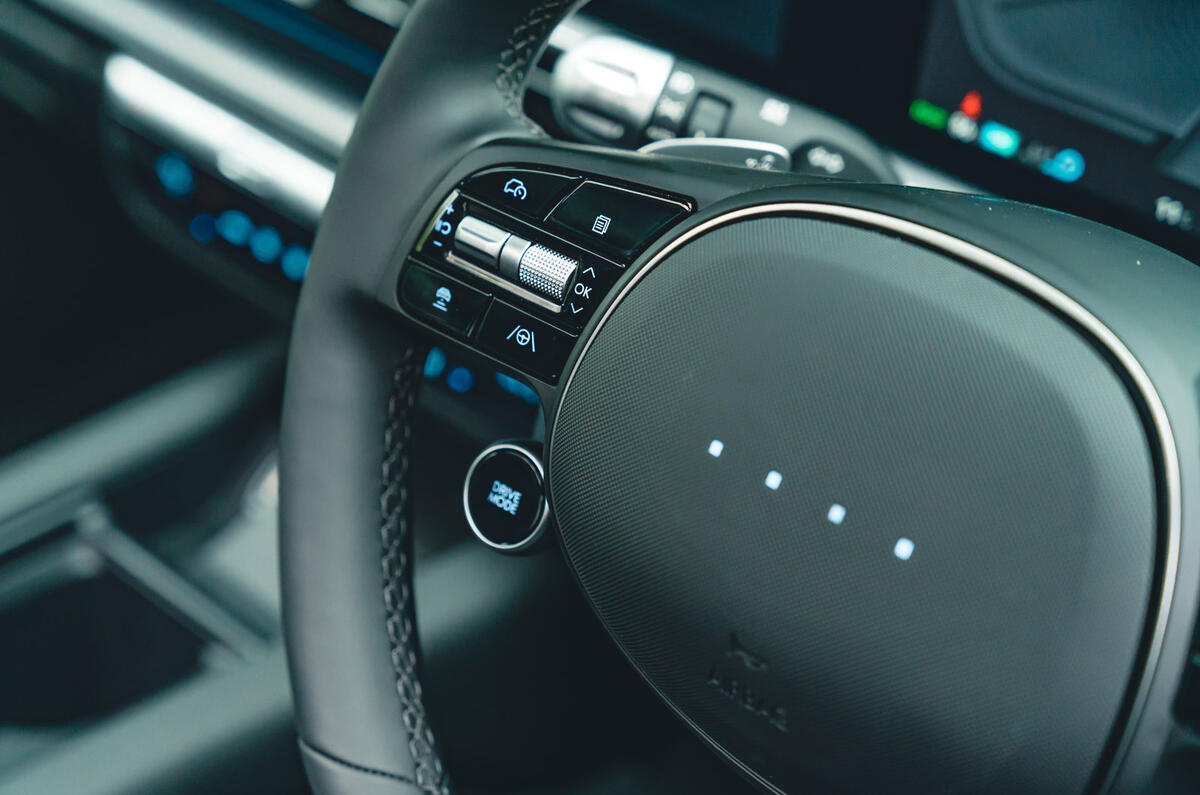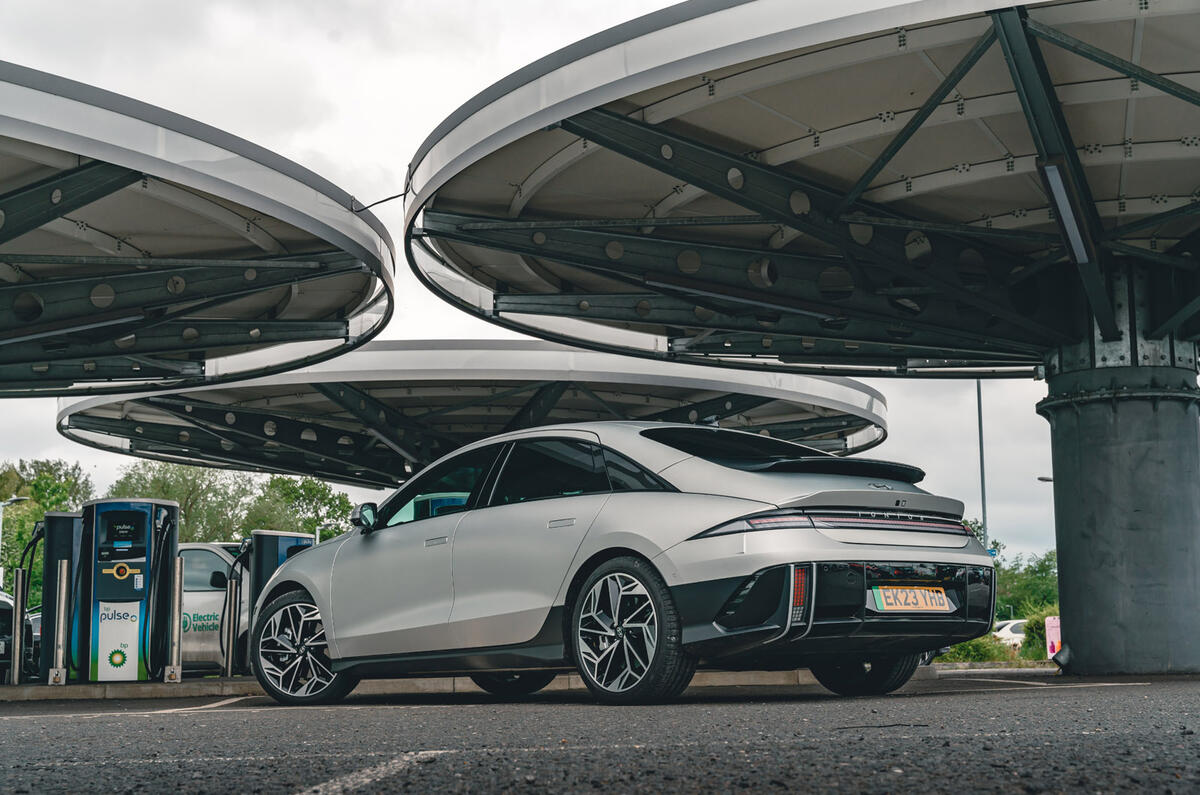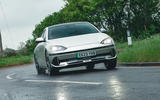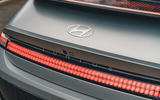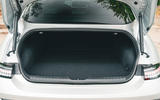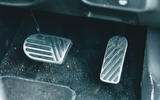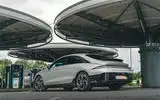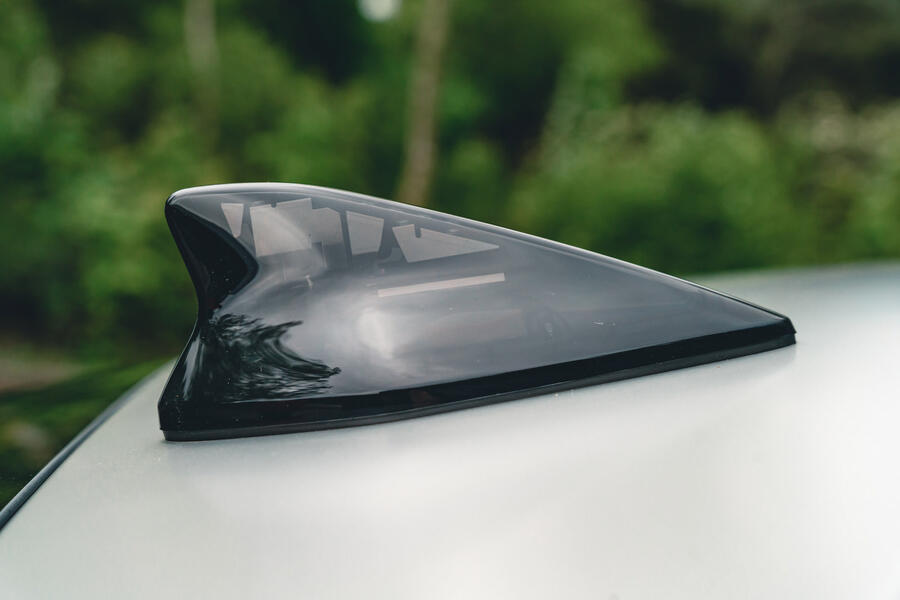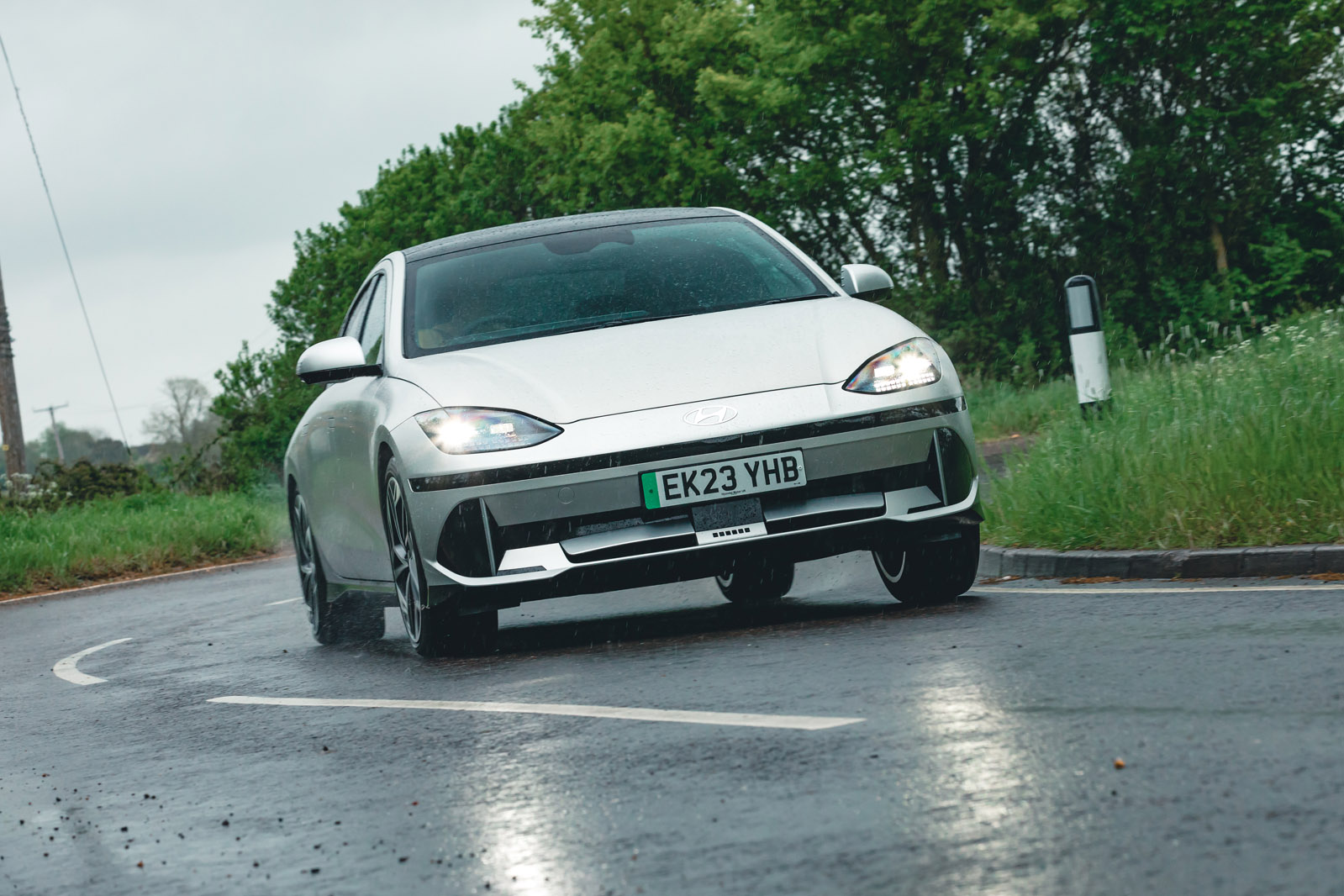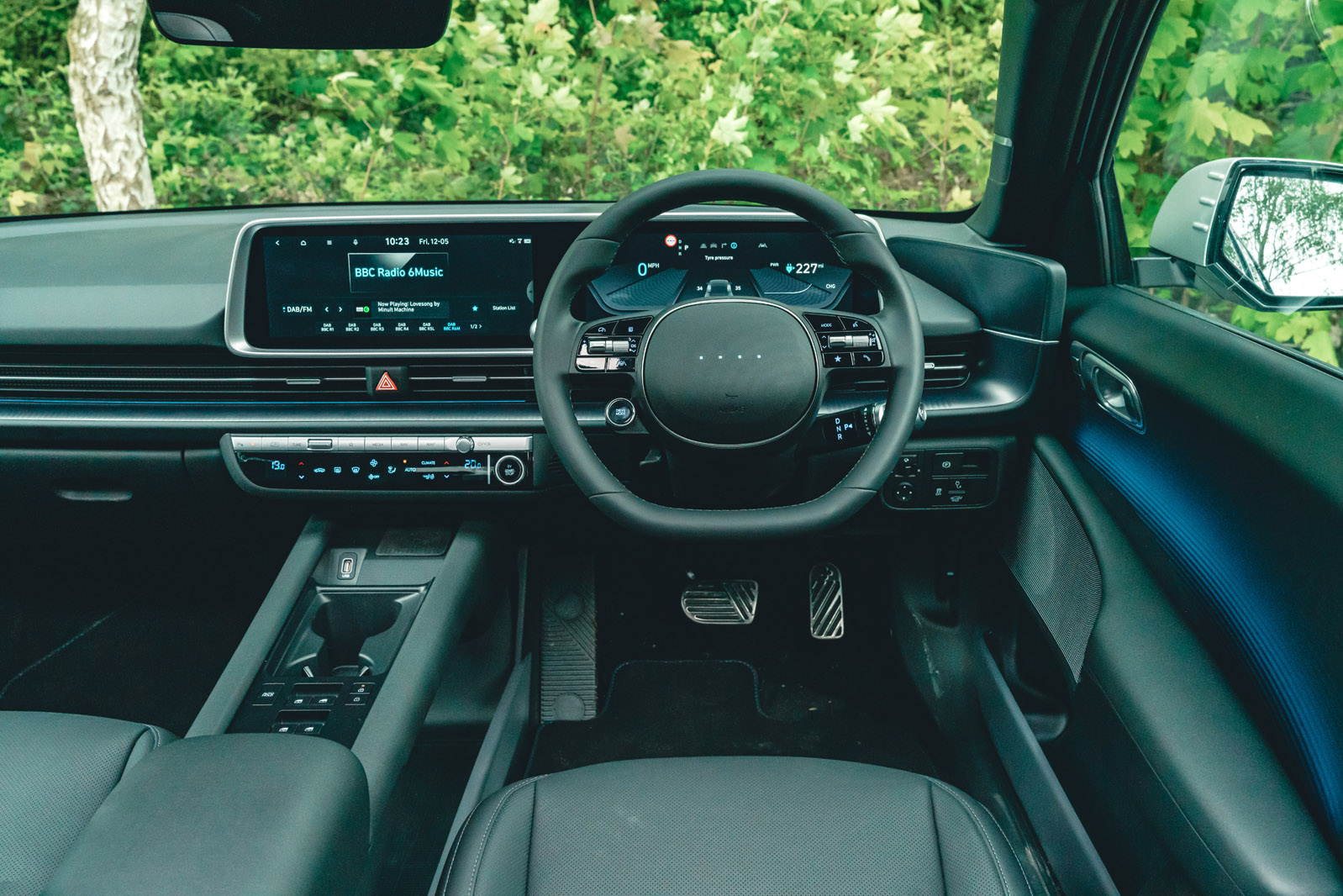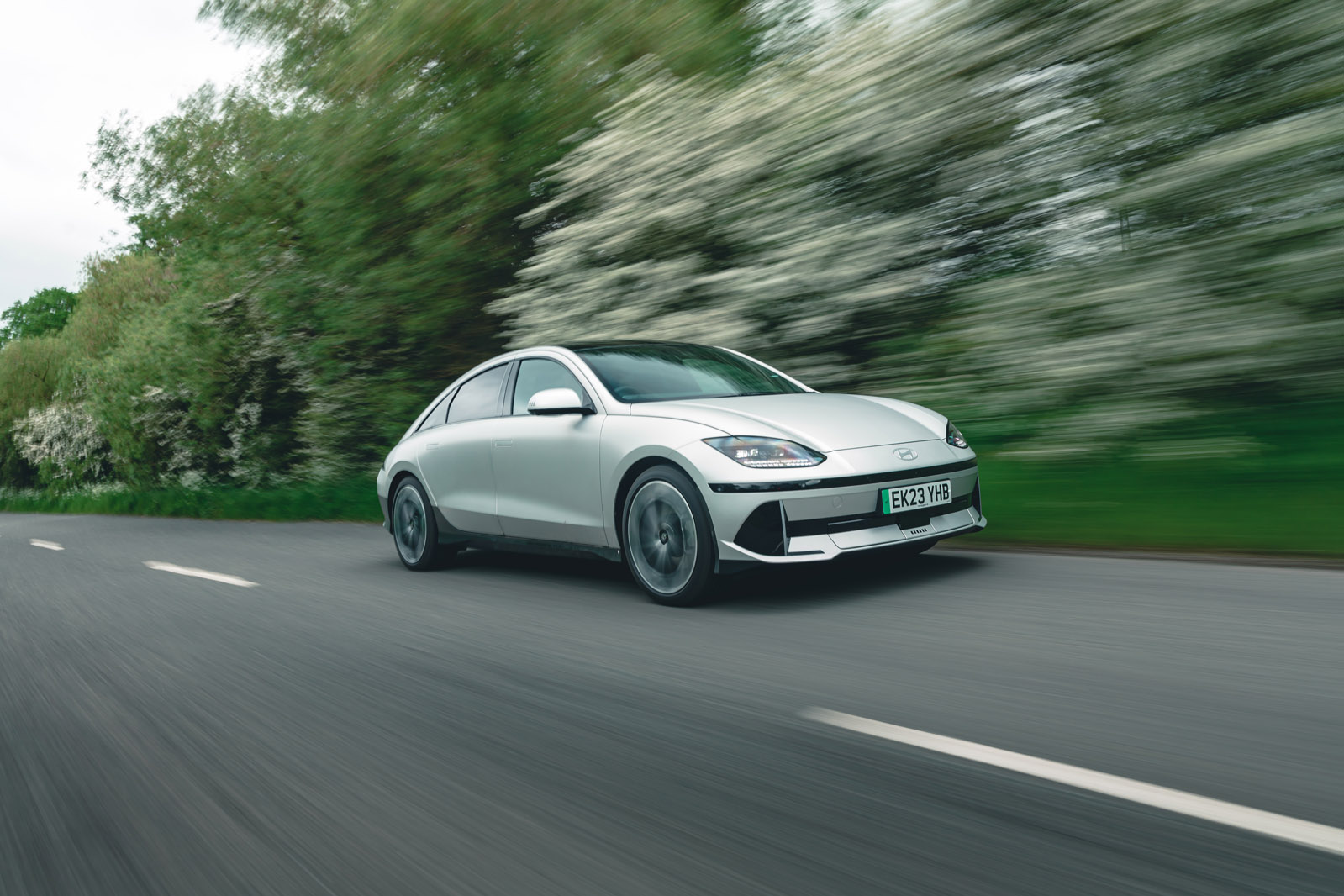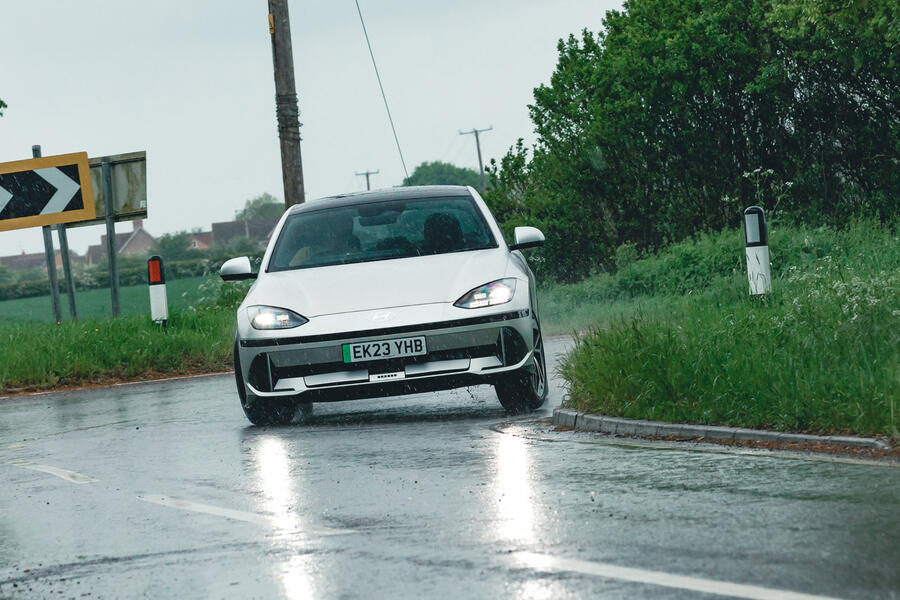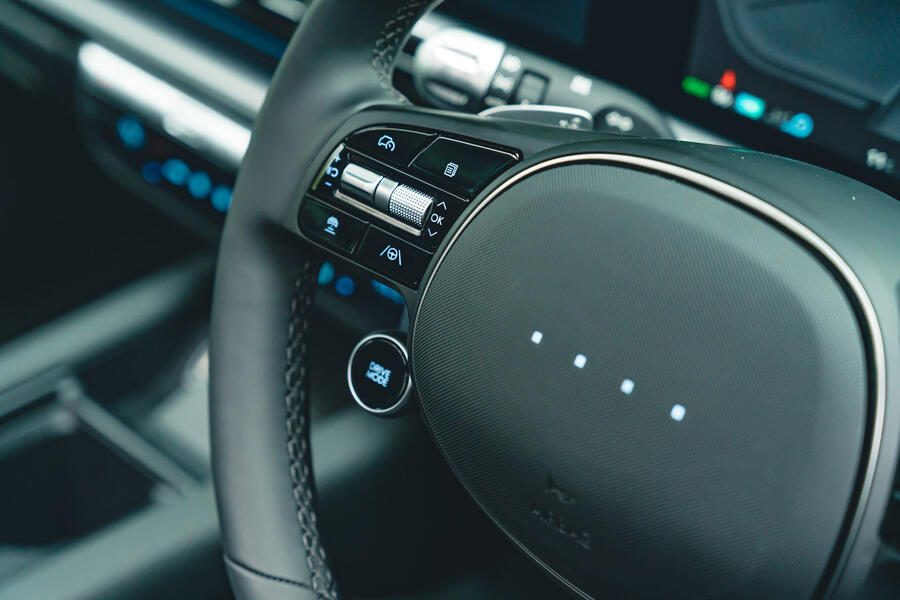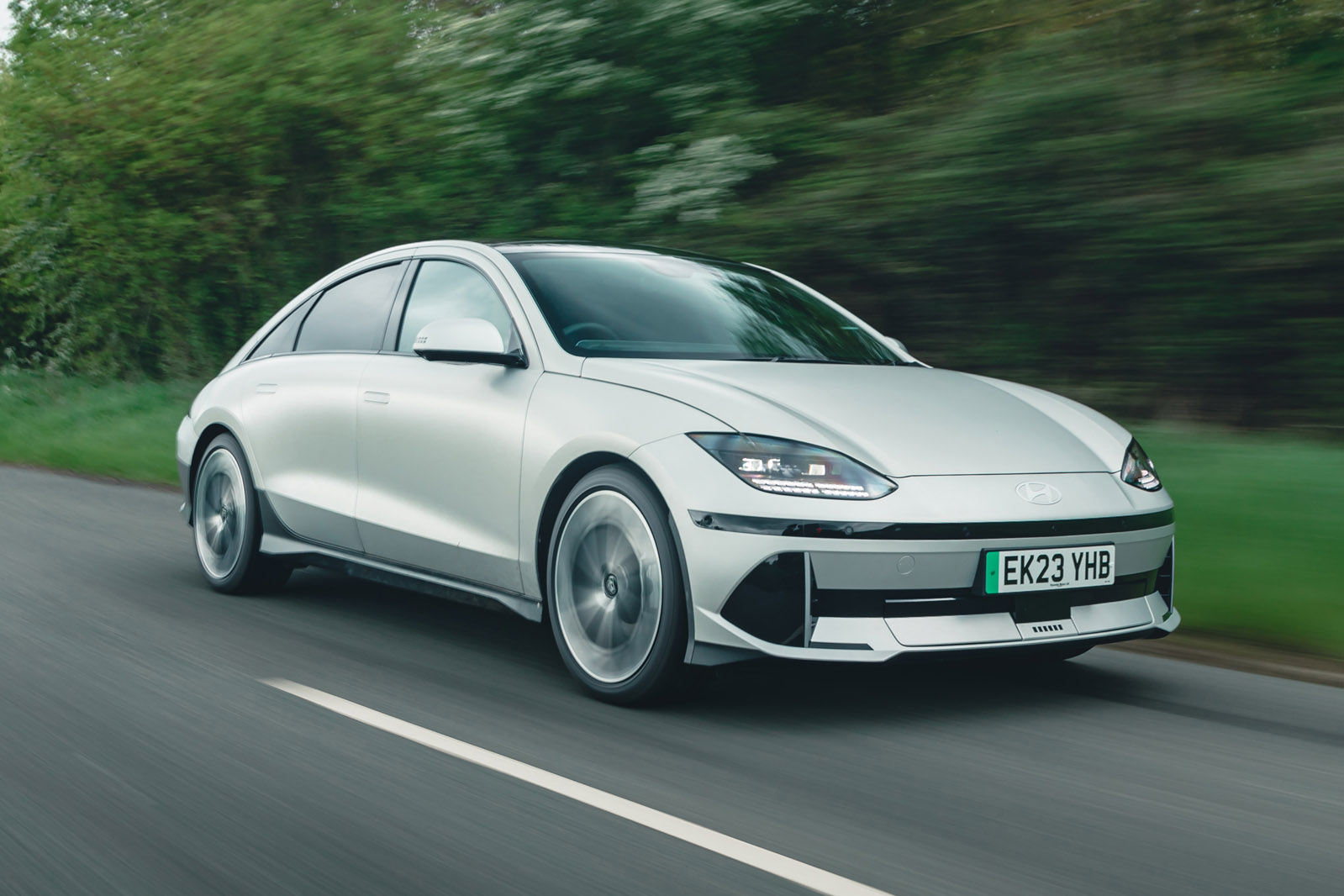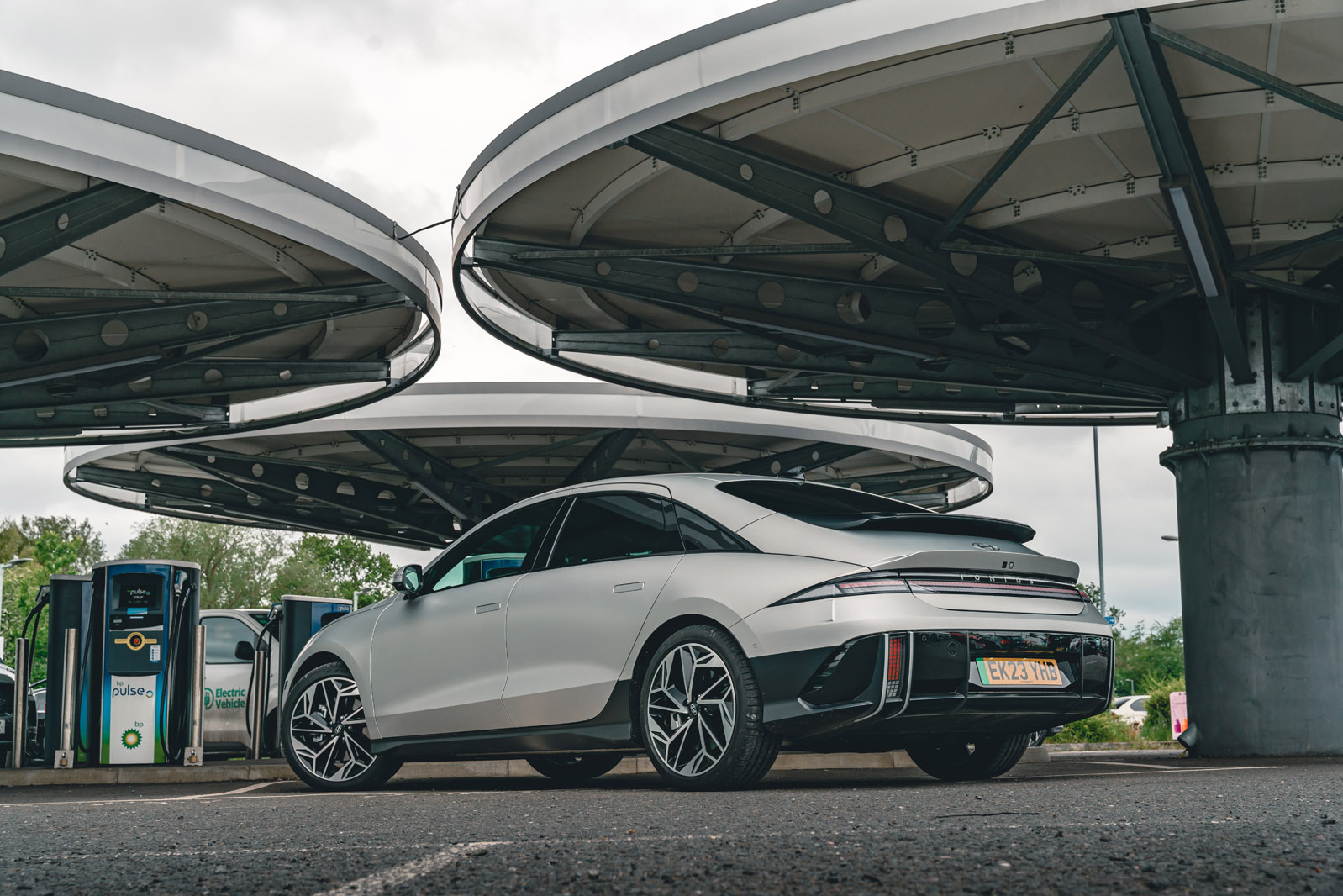Just as in many of the coupé-aping four-doors that became popular from premium brands a decade ago, this Ioniq 6 has a sloping roof that you must guard your head quite carefully from as you enter.
Once you are in, you can’t help noticing the main packaging challenge that Hyundai has clearly had with the car. With a battery pack taking space away under the floor and effectively displacing the occupant space upwards, and the effort to keep drag to a minimum also pushing the car’s roofline downwards, available cabin space feels a little squeezed.
A slight shortage of head room in the back of a car like this may be forgivable. But testers taller than six foot all reported being short on head room behind the wheel – some given a problem serious enough to cause neck ache over even an averagely long journey. The seat and steering column offer lots of adjustability but can’t quite mitigate how high the seats are mounted. Taller drivers will therefore be short of head room, which is an irksome failing if it affects you.
Leg room, however, is almost absurdly generous by comparison as a result of the long wheelbase, while boot space, under the large sloping saloon-style bootlid, is in fairly rich supply too. The car’s flat floor makes for plenty of storage space in the front of the cabin and useful extra leg room for any passenger travelling in the middle of row two.
Up front, the Ioniq 6’s dashboard layout is missing an identifying feature: the maker’s badge that commonly sits on any steering wheel boss. Hyundai prefers to put a row of LED lights here instead, which light up in different colours to alert the driver of various things. Just as it was on the Ioniq 5, it seems an unusual decision. Surely Hyundai should have been especially proud to have its brand identity on this car? It has certainly made a tidy effort of tactile quality – the car’s switchgear, mouldings and materials all feeling solid and moving with expensive heft.
Nestling behind that wheel is a twin-screen instrumentation-cum-infotainment flight console. Also seemingly Mercedes-inspired are multi-coloured ambient lighting features, which help to play on the space-capsule design theme.
At the lateral extremes of the fascia, meanwhile, are raised buttresses that look too large and conspicuous to be styling features. In a car with ‘digital side mirrors’, these are where the additional video screens are carried. Quite why they need to be built up like they are in cars with conventional mirrors is open to question.
Multimedia system
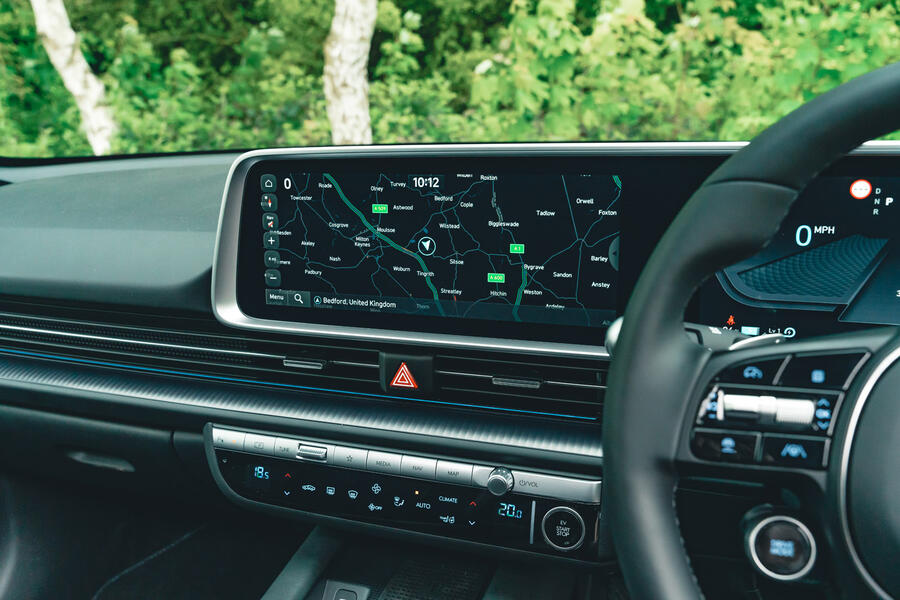
The Ioniq 6’s 12.3in touchscreen infotainment system is the one that will be familiar to Hyundai regulars. It has no manual cursor controller, so there’s seldom an alternative to operating it with an outstretched hand. However, its menus are laid out sensibly, the screen is crisp and responds quickly, its icons are easy to hit and usability is good, aided by a few menu shortcut buttons just under the screen and a physical volume knob.
Wireless device charging is included as standard, although it’s via a slightly small pad that our phones had a habit of falling off. Wireless Apple CarPlay and Android Auto phone mirroring are included and integrate quite nicely with the native interface. The system comes with a three-year data connection for network navigation routing, EV route planning (which works very well) and remote control of vehicle charging through a smartphone app.



